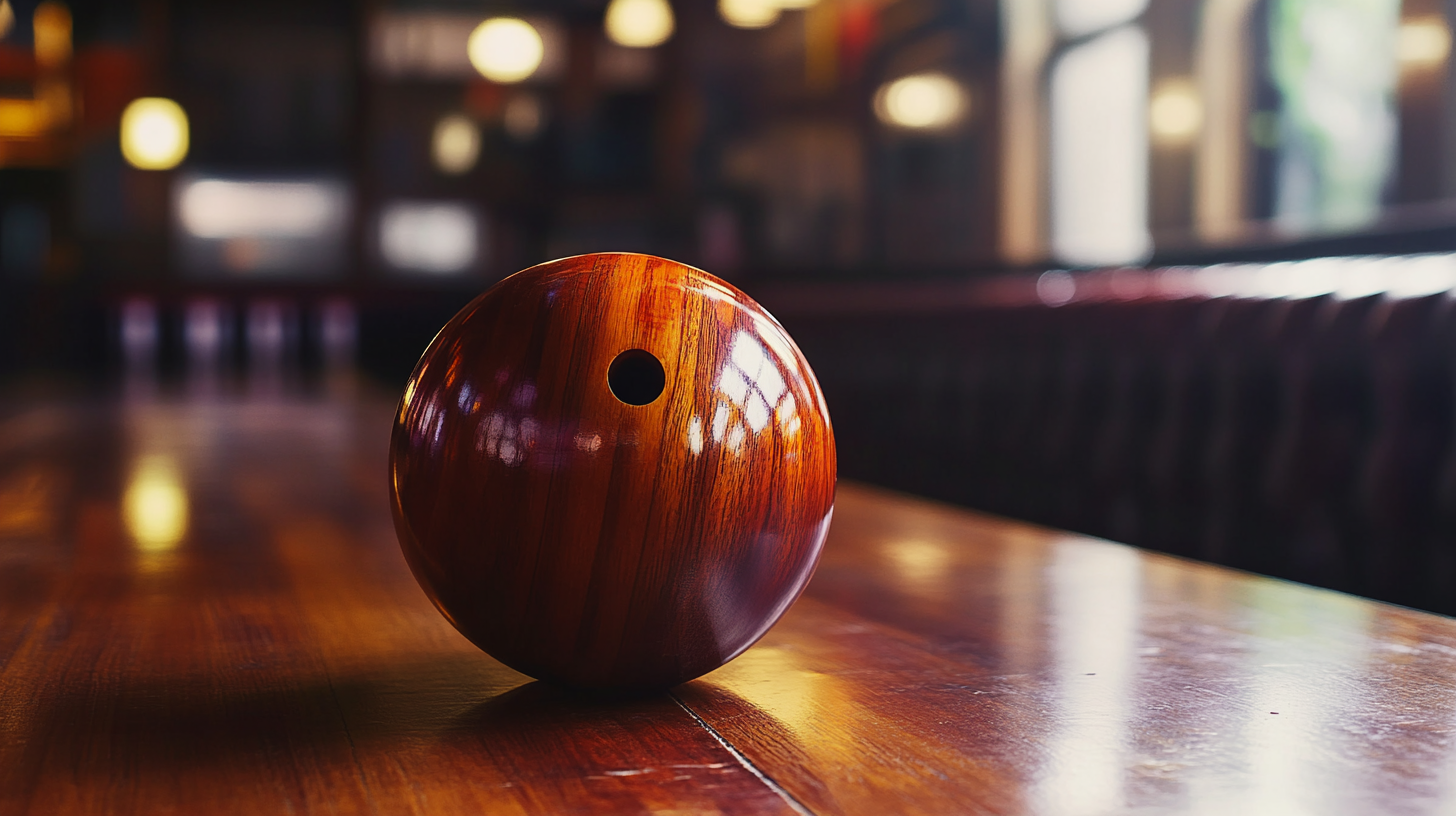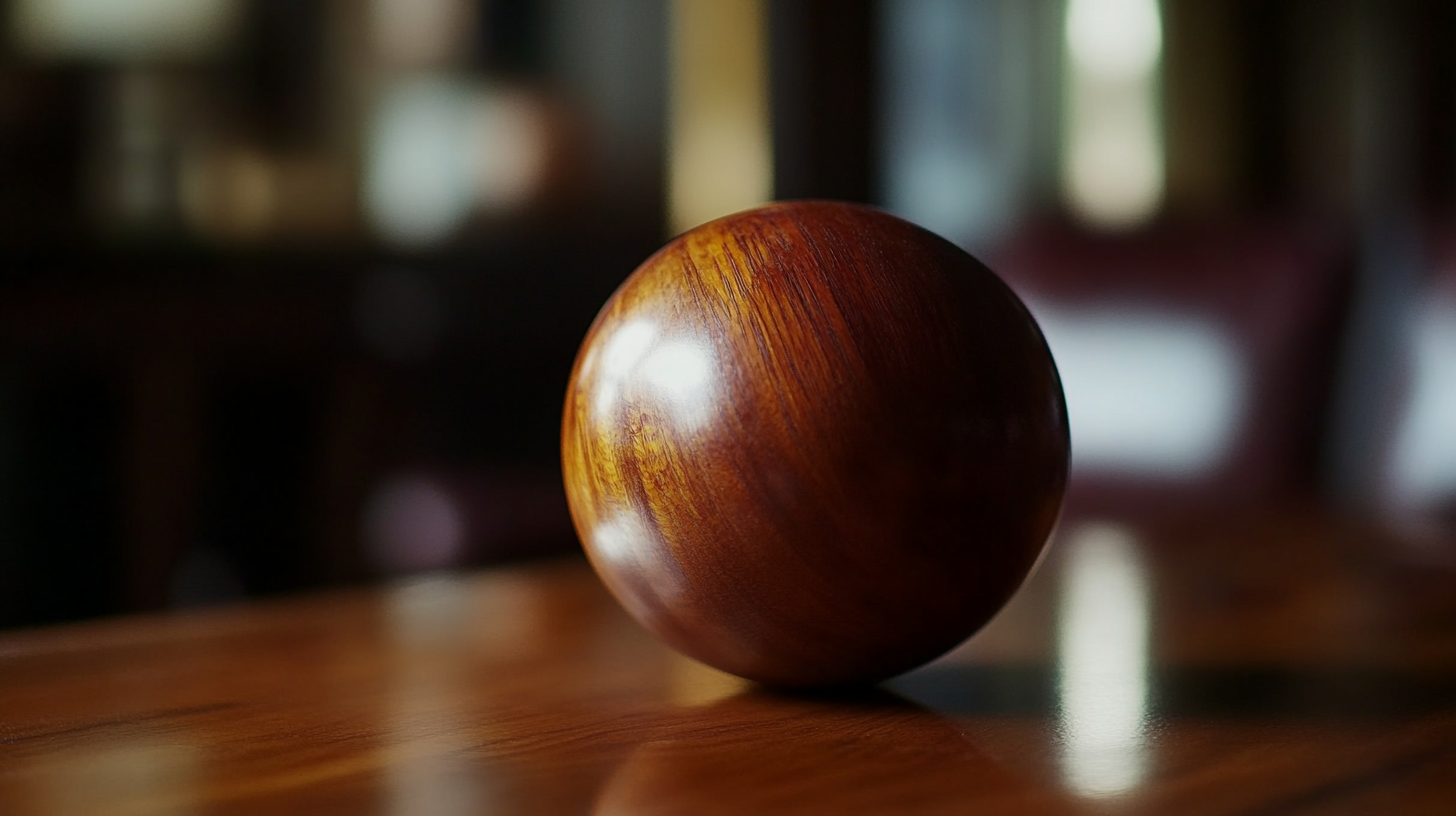 When searching for the ideal bowling experience, the choice of equipment significantly influences performance and enjoyment. Among various options, the Wooden Bowling Ball stands out not only for its aesthetic appeal but also for its unique playing characteristics. However, purchasing a bowling ball extends beyond mere selection; it requires consideration of important factors such as after-sales service and maintenance costs. In this blog, we will explore what distinguishes the best Wooden Bowling Ball from others in the market. We will provide insightful tips and numerical data to help you make an informed decision, ensuring that your investment offers both longevity and quality performance on the lanes. Whether you are a seasoned bowler or a novice, understanding these key aspects will enhance your bowling experience and make your choice truly remarkable.
When searching for the ideal bowling experience, the choice of equipment significantly influences performance and enjoyment. Among various options, the Wooden Bowling Ball stands out not only for its aesthetic appeal but also for its unique playing characteristics. However, purchasing a bowling ball extends beyond mere selection; it requires consideration of important factors such as after-sales service and maintenance costs. In this blog, we will explore what distinguishes the best Wooden Bowling Ball from others in the market. We will provide insightful tips and numerical data to help you make an informed decision, ensuring that your investment offers both longevity and quality performance on the lanes. Whether you are a seasoned bowler or a novice, understanding these key aspects will enhance your bowling experience and make your choice truly remarkable.
When it comes to wooden bowling balls, the quality of the material plays a pivotal role in performance and durability. High-density woods like maple and hardwood are preferred due to their ability to maintain shape and resist wear over time. According to various studies, balls crafted from top-notch materials tend to perform better, offering consistency in weight and balance, which is crucial for achieving the perfect roll. Statistics show that 75% of professional bowlers trust premium wooden balls for competition, highlighting the importance of investing in quality materials.
Tip: Always check the wood type and grain pattern when selecting a bowling ball. Balls with tighter grain patterns typically provide better performance and longevity.
Additionally, wood treatment processes can significantly affect the feel and performance of the bowling ball. Curing and finishing techniques are essential to enhance the resilience of the wood, preventing it from cracking or splitting during gameplay. A statistical review indicates that properly treated wooden balls can outlast untreated ones by nearly 30%.
Tip: Look for balls that have undergone thorough treatment and inspections, ensuring you get a product that stands the test of time.

When it comes to bowling balls, the choice between wooden and synthetic materials often comes down to performance metrics that greatly influence a bowler's experience. Wooden bowling balls, traditionally used in vintage or recreational settings, offer a unique feel and aesthetic that many enthusiasts cherish. They tend to provide a softer impact on the lanes, yielding a smooth roll that can be beneficial for achieving a controlled delivery. Additionally, the density of wood allows for subtle variations in weight distribution, which can enhance a bowler's precision and control over their shots.
On the other hand, synthetic bowling balls dominate the modern market with their superior performance capabilities. These balls are designed with advanced materials that ensure durability and consistency, making them ideal for competitive play. Synthetic options often have enhanced hooking potential and more reactive surfaces, allowing bowlers to adapt to various lane conditions more effectively. Moreover, they typically come in a variety of weights and styles, enabling players of all skill levels to find the perfect fit tailored to their favorite bowling techniques. Ultimately, while wooden bowling balls hold nostalgic value, synthetic alternatives provide a cutting-edge edge that often leads to better performance on the lanes.
When it comes to high-quality wooden bowling balls, the manufacturing process plays a crucial role in determining their performance and durability. One of the key steps involves selecting the right type of wood, such as hard maple or birch, which offers a perfect balance between weight and resilience. This choice ensures that the ball maintains its shape and integrity over time, leading to a better playing experience.

Another important manufacturing technique is the precision turning process. This involves shaping the wooden material on a lathe to achieve the perfect roundness and smooth surface finish. A meticulously crafted surface not only enhances the ball's aesthetic appeal but also affects its interaction with the bowling lane, allowing for improved traction and control.
Tips for selecting the best wooden bowling ball include always checking the manufacturer's reputation and looking for certifications that indicate quality control. Additionally, consider the ball's weight distribution; a well-balanced ball will perform better during gameplay. Finally, don't forget to choose a design that resonates with your personal style, as a visually appealing ball can enhance your overall bowling experience.
In 2023, consumer preferences in the wooden bowling ball market are increasingly shaped by emerging trends that highlight the importance of sustainability and craftsmanship. As more bowlers seek eco-friendly options, the demand for high-quality wooden bowling balls has surged. According to recent studies, the global market for herbal medicinal products is projected to reach USD 453,881.4 million by 2033, with a compound annual growth rate (CAGR) of 7.8%. This trend underscores a broader consumer shift towards natural products, paralleling the growing popularity of wooden bowling equipment.
Additionally, the unique characteristics of wooden bowling balls, such as their weight and grip, are critical in influencing buyer decisions. Consumers are favoring products that not only perform well but also reflect their values around sustainability and health. As the market continues to evolve, retailers must adapt to these changing preferences, ensuring their offerings align with the expectations of today's eco-conscious bowlers. Tailoring marketing strategies to emphasize the artisanal quality and environmental benefits of wooden bowling balls could help businesses capture significant market share in this niche yet thriving sector.
| Feature | Consumer Rating (1-5) | Preference Percentage (%) | Price Range ($) |
|---|---|---|---|
| Material Quality | 4.5 | 82% | 50 - 150 |
| Weight Options | 4.3 | 75% | 60 - 160 |
| Design Aesthetics | 4.7 | 90% | 70 - 200 |
| Durability | 4.6 | 85% | 55 - 155 |
| Brand Reputation | 4.4 | 78% | 50 - 160 |
The significance of brand reputation in the wooden bowling ball market cannot be overstated. Established manufacturers have built a strong legacy, characterized by consistent quality and performance, which greatly influences consumer purchasing decisions. When players seek a reliable bowling ball, they often gravitate towards brands known for their craftsmanship and durability. A positive brand reputation not only assures consumers of a quality product but also fosters loyalty, encouraging repeat purchases and word-of-mouth recommendations.
Moreover, a reputable brand often invests in research and development, leading to innovative designs that enhance gameplay. This commitment to improvement is a key differentiator in a crowded marketplace. Brands that prioritize their reputation typically engage with their community, incorporating feedback and adapting to consumer needs, which helps them stay ahead of the competition. As a result, the best wooden bowling balls are often those that not only meet but exceed customer expectations, solidifying their place in the market and elevating the overall standard for quality in the industry.
